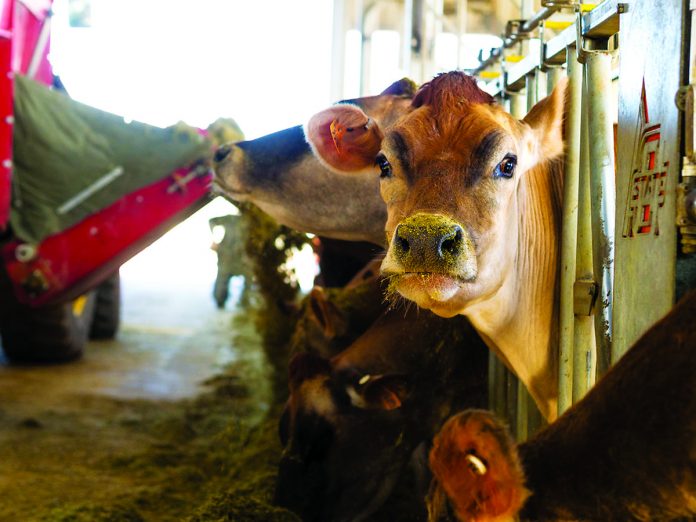EAST LANSING, Mich. — Feeding the 9 million U.S. dairy cows requires millions of acres of crops and accounts for more than half of total dairy farm costs.
The Foundation for Food and Agriculture Research recently awarded Michigan State University a $1 million grant to improve dairy cow feed efficiency, which could improve farmer profitability and substantially reduce the greenhouse gas footprint of the dairy industry.
The Council on Dairy Cattle Breeding provided matching funds, for a total award of $2 million.
Breeding for feeding
Dairy farmers could significantly reduce their expenses by selecting cows with the highest feed efficiency, which are the cows that produce the same or more milk while consuming less feed.
In 2010, Michigan State researchers participated in a US Department of Agriculture (USDA) National Institute of Food and Agriculture (NIFA)-sponsored study that found breeding for more feed-efficient cows could save the U.S. dairy sector $540 million a year with no loss in milk production.
The major challenge to achieving this goal has been collecting enough data on enough cows to develop reliable genomic breeding values for feed intake.
What’s involved
This project will measure feed intake, milk production, body weight, and other information on 3,600 dairy cows to add to the existing database created as part of the earlier USDA NIFA project.
In addition, the research team, led by Dr. Michael VandeHaar, will use new sensor technologies to monitor dairy cows’ body temperature, feeding behavior, and locomotion, along with milk spectral data, to predict feed intake and gather data from thousands of cows to further improve the ability of farmers to select the most efficient cows.
The researchers also will evaluate whether their genetic predictions can be used to decrease methane emissions from dairy cattle.
The geneticists and nutritionists will collect intake and sensor data on 3,600 cows from five locations,” said VandeHaar.
“Our project will enhance the reliability of feed intake breeding values and enable inclusion of feed costs as a trait in Net Merit,” he said. “We also expect that our predicted feed intake index can be used for making culling and breeding decisions.”
Genomic evaluations
The Council on Dairy Cattle Breeding plans to provide genomic evaluations for residual feed intake in 2020, so dairy producers worldwide can include better predictors of feed efficiency in their genetic selection and management decisions.
Emissions connection
Additionally, this project could help improve the sustainability of milk production.
Feed production is responsible for about 20 percent of the greenhouse gas emissions for every gallon of milk, according to the Innovation Center for U.S. Dairy.
Reducing the amount of feed dairy cows consume will reduce this footprint and could also reduce emissions associated with manure and digestion.
Collaborating institutions include the University of Wisconsin, Iowa State University, University of Florida, and USDA Animal Genomics Improvement Laboratory.












